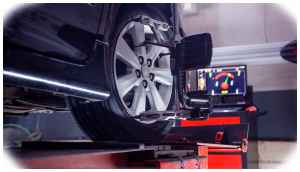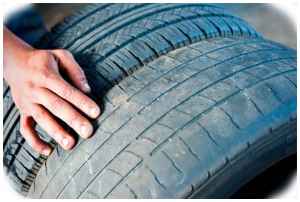If you have recently had your car aligned and it is now pulling to the left, there are a few possible causes that may be causing the issue. This guide will look at what could be causing your car to pull to the left after alignment and how you can diagnose and solve the problem.
Common Causes of Car Pulls to the Left after Alignment
When a car pulls to one side after an alignment, it often means something is wrong with either the tires, suspension components, or steering system. Below are some of the most common causes for a car pulling to one side:
-
Worn or Damaged Tires: Worn tires can cause excessive wear on one side of your vehicle which may lead it to pull in that direction. Unevenly worn tires can also cause instability while driving and should be replaced as soon as possible. You can choose here new All Season Tires for your Jeep Grand Cherokee.
-
Bent or Damaged Suspension Components: Suspension components can become bent or damaged due to potholes in roads, hitting curbs while parking, or even just general wear and tear over time. Bent suspension components can cause uneven weight distribution on each wheel which leads your car to pull in one direction when accelerating or braking.
-
Misaligned Steering Components: Misaligned steering components can cause your car to pull in one direction when driving. This is usually due to worn or damaged steering linkage or ball joints.
-
Incorrectly Adjusted Toe Angle: The toe angle on a car should be adjusted after every alignment and tire rotation. If the toe angle is set incorrectly, this can cause your car to pull in one direction while driving.
- Misaligned Wheels: Misaligned wheels can cause a car to pull to the left or right after an alignment. If the wheels are not within spec, they will experience more rolling resistance on one side than on the other, resulting in a pull or drift in one direction.
How to Diagnose the Problem
The first step to diagnosing why your car may be pulling to the left is by doing a visual inspection of the tires and suspension components. This will help you identify any worn tires, bent suspension parts, or other issues that could be leading to uneven weight distribution while driving.
Once you have identified any potential problems with your tires and suspension components, you should take your car for a test drive and observe how it drives under various conditions like accelerating, braking, turning corners etc. This will give you an indication as to where the issue lies and what needs fixing.
Finally, it’s important that you check the alignment of your vehicle after identifying any potential problems with it. Make sure all four wheels are aligned properly and that there are no misalignments or inaccuracies.
Solutions for Car Pulls to the Left after Alignment
Once you have identified the cause of the problem, you can begin working on fixing it. Below are some of the most common solutions for car pulls to the left after alignment:
-
Replacing Worn or Damaged Tires: If your tires are worn down unevenly, it’s best to replace them as soon as possible. This will help ensure even weight distribution and improve handling while driving.
-
Replacing or Repairs Suspension Components: If any suspension components are bent or damaged, they should be either replaced or repaired immediately. This will help restore proper suspension geometry and reduce pulling while driving.
-
Realigning Steering Components: If any steering components are misaligned, they should be realigned to reduce pulling in one direction while driving.
-
Adjusting Toe Angle: The toe angle should be adjusted after every alignment and tire rotation to ensure optimal vehicle handling and stability.
|
Cause of Pull |
Solution |
| Worn or Damaged Tires | Replace worn or damaged tires |
| Bent or Damaged Suspension Components | Replace or repair suspension components |
| Misaligned Steering Components | Realign steering components |
| Incorrectly Adjusted Toe Angle | Adjust toe angle after every alignment and tire rotation |
| Misaligned Wheels | Align wheels properly |
Conclusion
A car that pulls to the left after an alignment can be caused by a number of factors, including worn tires, bent suspension components, misaligned steering components and incorrect toe angle. It’s important that you diagnose the issue properly and address any potential problems as soon as possible to ensure optimal car performance and safety. With the right diagnosis and solutions, you can get your car back to handling as it should.

 Incorrectly Adjusted Toe Angle: The toe angle on a car should be adjusted after every alignment and tire rotation. If the toe angle is set incorrectly, this can cause your car to pull in one direction while driving.
Incorrectly Adjusted Toe Angle: The toe angle on a car should be adjusted after every alignment and tire rotation. If the toe angle is set incorrectly, this can cause your car to pull in one direction while driving. Replacing Worn or Damaged Tires: If your tires are worn down unevenly, it’s best to replace them as soon as possible. This will help ensure even weight distribution and improve handling while driving.
Replacing Worn or Damaged Tires: If your tires are worn down unevenly, it’s best to replace them as soon as possible. This will help ensure even weight distribution and improve handling while driving.
Add Comment